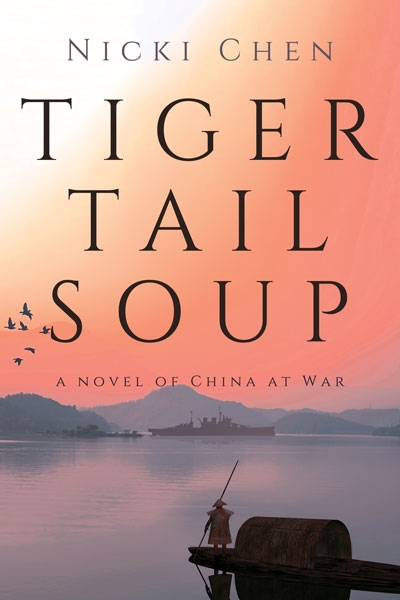 I’m a writer now, but once upon a time I was a painter. And before that I was the kid who hurried through my multiplication tables so I could draw paper dolls for my friends.
I’m a writer now, but once upon a time I was a painter. And before that I was the kid who hurried through my multiplication tables so I could draw paper dolls for my friends.
We lived in the Philippines when I took up Chinese brush painting. My teacher, Professor Chen Bing Sun, considered art the noblest of callings, and he expected no less dedication from his students.
Back to the Basics
Chinese brush painting begins with a grinding stone, a stick of dry compacted ink, and brushes made of bamboo and rabbit hair or wolf hair. No ready-made ink for the Chinese brush painter. She makes her own. Dipping her brush in water, she splashes it on her stone and then grinds her ink stick around and around on the stone until she has made ink that’s black as a crow’s back and thick as its spittle.
This preliminary step is a kind of meditation. Like sharpening your pencils or scanning your facebook page, ink grinding is a gentle prelude to the main task.
The next step is learning to hold the brush properly—not at an angle as we do in the West, but straight up and down to control the thickness of the stroke. The same posture is used when writing Chinese characters—a posture that, by the way, encourages keeping your back straight.
The rice paper used for Chinese brush painting is thinner and more porous than paper used for watercolor in the West. It comes in a roll, so when a painting or sketch is finished, you need only paint a line across it with water and rip that portion away from the rest of the roll.
Plants and Animals
My painting class met twice a week. The first few weeks we painted plum blossoms, outlining each petal for the detailed style or painting petals without edges for the free style. The stamens were a different stroke, dark and thin and trailing off to nothing at just the right point.
 Typically we graduated from plum blossoms with a painting called “10,000 plum blossoms.” Not 10,000, but still, many, many blossoms.
Typically we graduated from plum blossoms with a painting called “10,000 plum blossoms.” Not 10,000, but still, many, many blossoms.
Next we moved on to bamboo and orchids, after which we studied chrysanthemums, peonies, lotus and pine trees interspersed with fish, birds, shrimp, crabs, chickens and horses. Every subject used different brush strokes and techniques.
Skill vs. Creativity
But when, we wondered, could we paint tigers and landscapes and people? When could we be creative?
 The time arrived eventually, but only if we were willing to stick it out for a number of years. Persistence and discipline have long been high on the list of virtues the Chinese admire.
The time arrived eventually, but only if we were willing to stick it out for a number of years. Persistence and discipline have long been high on the list of virtues the Chinese admire.
Some of Professor Chen’s students are still painting. (See the website of Jamaliah Marais. ) I stopped after 8 or 9 years. But the experience gave me another window into the Chinese mind and thus a better understanding of my Chinese husband. It also helped in writing my novel, Tiger Tail Soup, which is set in China and features a Chinese narrator.
Next week’s blog post is about modern art and the Ai Weiwei Exhibit at the Indianapolis Museum of Art.



When we traveled in China we had the opportunity to watch young students paint. Such care and meticulous brush strokes. I admire your patience in becomiing a Chinese brush painter.
I wonder if the young students you saw, Paddy, also practiced calligraphy with the brush pen. The strokes are similar. Or are Chinese students, like American students, losing their handwriting skills to keyboarding and texting?
Dear Nicki,
When I saw the picture of your beautiful smile, I immediately thought of this well-known poem:
“Turning her head, she smiled so sweet and full of grace
That she outshone in six palaces the fairest face.”
This is one of my favourite poems. The is the 9th-century narrative poem Chang Hen Ge (“The Song of Everlasting Sorrow”) 长恨歌 by Bai Juyi. It describes Emperor Xuanzong’s love for his concubine Yang Guifei (She is one of the four Chinese beauties, and her beauty even put flowers to shame!) Someone has done an English translation of the poem here. It’s not the best translation, but you’ll get an idea.
Wow! I’m blushing. I don’t think I ever came close to Yang Guifei. But thank you for the translation of the poem. Very interesting.
I love your paintings, and batik. You’re a multi-talented lady!
Hi Nicki, would you be interested in doing a guest post for my blog? I love your stories and would be honored to feature a guest post written by you. If you’re interested, drop me an e-mail: chinaelevatorstories[at]gmail.com.
I can only imagine how interesting and fun the classes must be!
😀
Did you paint any mythological characters? The Monkey King perhaps?
Sorry, Hari, I didn’t paint any mythological characters. The Monkey King would be a good subject, wouldn’t it?
Yes, it would. 😀
I heard that The Monkey King was one of the most popular “humane” subject in brush painting, along with The Buddha, Avalokitesvara, Fu Lu Shou, Guan Yu and Maitreya (the Chinese version – chubby, smiley and surrounded by little kids)
Hi Nicki, so when and where is tiger tail soup available? enjoy your blog and would like toread the novel when available.
Your friend and classmate,
Bob Gummere
Hi Bob. Tiger Tail Soup should be available this coming spring. I’ll be sure to let you know as soon as it’s published.